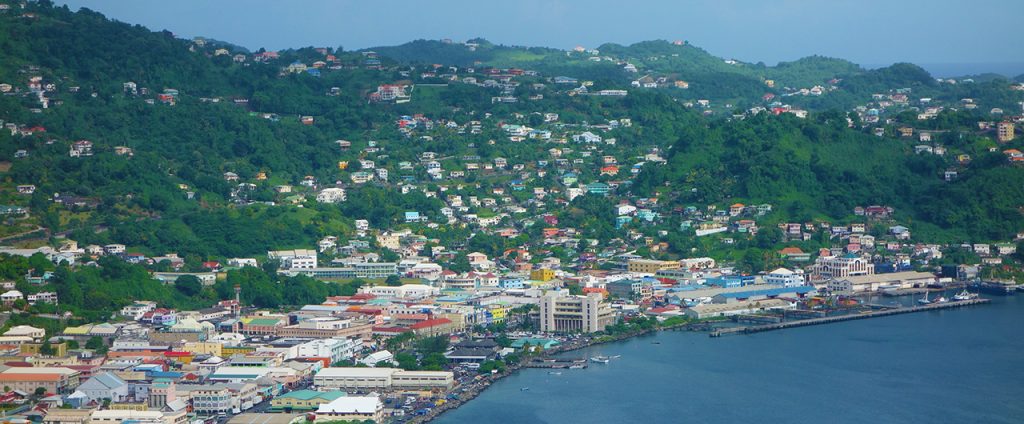Weighing the impact of Argyle
By Kareem Yarde
Op-Ed Contributor
It was recently announced with great fervor that St. Vincent and the Grenadines will be officially opening the Argyle International Airport (AIA) on February 14th 2017. Beset by challenges from the inception, the airport has nonetheless been touted as an opportunity to create economic growth for this small island developing state.
Indeed, the development of a strong air transport industry creates significant potential for growth in areas such as trade, foreign direct investment, and tourism.
Additionally, the skilled domestic employment associated with an airport also presents significant potential to increase the tourism multiplier (the extent to which money earned in tourism is spent throughout the rest of the economy). Therefore, it is not surprising that any small island developing state would view as critical the importance of having its own international airport.
In the context of AIA, this undertaking was executed at great financial, social and environmental expense which included the removal of three mountains, and the relocation of one hundred and forty three homes, a church and cemetery. To-date, the development had been dogged by delays and criticisms of its legitimacy.
The first phase of the development of Argyle International Airport was undoubtedly an uphill battle, but the reality is that its most difficult time might yet be to come.
As the largest capital development project in the history of St. Vincent and the Grenadines, it is now the behest of every Vincentian to ensure that the project does not emerge into a ‘white elephant’; a syndrome which has served as an economic albatross for citizens of destinations with far greater economic prowess and less challenges.
In our context, air transport development is often a synonym for tourism development. Therefore, growth in the air transport industry to an extent that it will be able to support a development such as Argyle calls for significant integration into the destination’s tourism development strategy.
According to International Airport Development Company, “Argyle is built to facilitate 1.5 million passengers annually”.
However, during 2015, St. Vincent attracted approximately 75,381 stayover visitors by air, the largest market of which was from the U.S (22,063; 29 %) followed by the United Kingdom (17,045; 22%).
Based on information collated from the 2016 edition of the Official Publication of the St. Vincent and the Grenadines Hotel and Tourism Association, there are approximately 952 rooms across 65 properties throughout St. Vincent and the Grenadines. SVGs tourism product is therefore comparatively smaller in size, diversity and therefore attractiveness when juxtaposed to many other destinations throughout the region. Many of which adopt a competitive rather than complimentary approach towards targeting the region’s major source markets.
Admittedly, a case could be made that there is significant suppressed demand for St. Vincent’s tourism product which has been deferred as a consequence of the costs associated with reaching the destination (ie financial costs, time consumption costs, discomfort from transiting etc).
Nonetheless, the destination will have a significant challenge expanding for example its US market which, depending on the demographic being targeted, can traditionally be a more brand loyal market. Hence, the lack of such brands would hamper growth in that market.
In summary, this is an extremely extensive topic and AIA, as an apt example of the challenges many other small island developing states face provides an interesting case upon which to identify strategies which some SIDS have been adopting to ensure the most substantial benefits can be achieved from tourism and air transport. These include but are not limited to:
- Creating authentic experiences. Modern day travelers inclusive of the most wealthy are seeking authentic experiences, a trend which is being heavily driven by a visitor profile which is shifting towards being able to gain first hand experiences about the destination’s culture. The destination must therefore focus on making its product unique and attractive. A strong product creates sustainable demand.
- Expanding available room stock using the shared economy.
- Focusing on more flights from fewer airlines (IMF recommendation)
- Developing strong travel trade partnerships.
- Capitalizing on limited infrastructural development to target special interest/ niche markets.
- Ensuring favorable connections in both directions. However, this is likely to present a challenge because this requires flexibility in the schedule which an emerging destination without critical mass is unlikely to have without substantial subsidisation.
It has been an extremely costly endeavor on many fronts and the costs are likely to continue to accrue as subsidization and concession strategies are likely to be employed in attempts to lure carriers and tourism developers.
As highlighted before, this is an extremely extensive topic which this limited medium could hardly do justice to.
Nonetheless, these are strategies SVG would do well to consider, because as the largest capital development project in the country’s history, as easily as AIA has the potential to serve as the road to economic success for SVG, it could also prove to be an even greater burden if not adequately handled.
Kareem Yarde is the Founder and Creative Strategist of Tourism Analytical Services. He can be reached at kareemyarde@gmail.com.
Note: the opinions expressed in Caribbean Journal Op-Eds are those of the author and do not necessarily reflect the views of the Caribbean Journal.
